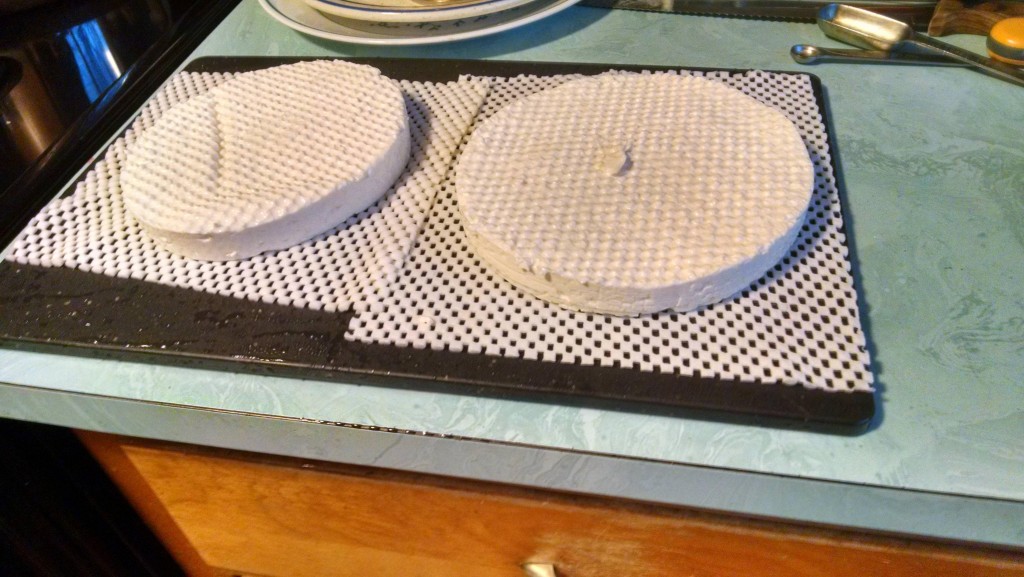Like most sane people, I’m a big fan of cheese. I also like to cook. I bake bread and brew beer, clearly I have an affinity for bacteria-based foodstuffs. Let’s try making cheese!
It’s actually turned out really good. I started last Fall. I built a simple cheese press, fasioned some forms out of old takeout containers, and ordered some rennet and bacteria online from cheesemaking.com. They’ve also been my primary source for recipes. I acquired a small wine fridge with a thermostat from a family member and bought a hygrometer from Thermoworks to put in it.
Below I’ve cataloged what cheeses I’ve made so far, and some thoughts I wrote about them at the time.
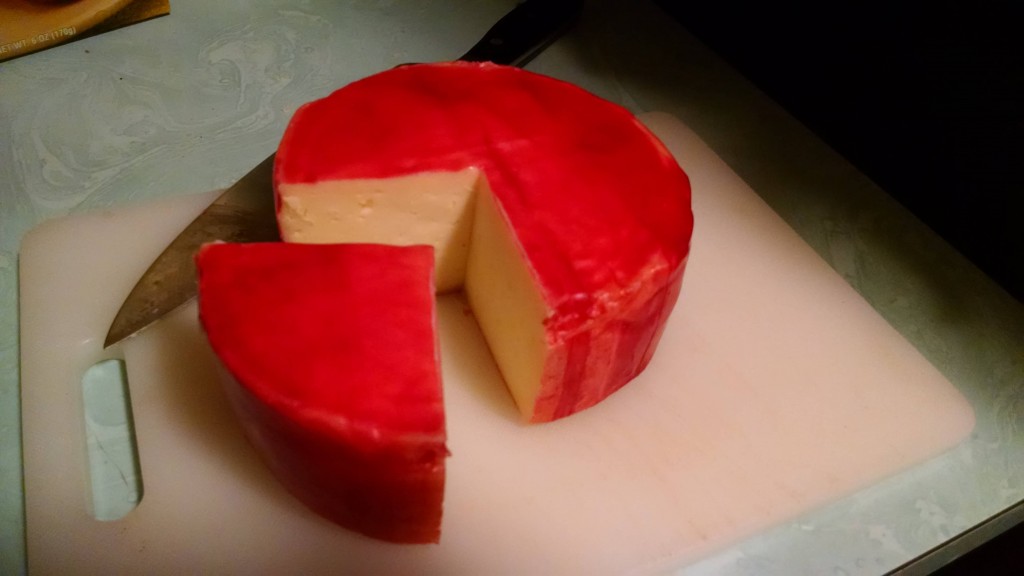
This was my second aged cheese, after a 2-month simple “farmers cheese.” I don’t have any photographs of that one, so we’ll start here. This Colby turned out really fantastic. It had a bit of tang to it, but mostly it was creamy. The recipe has you washing the curds in cold water, which should retain some of the moisture after cooking.
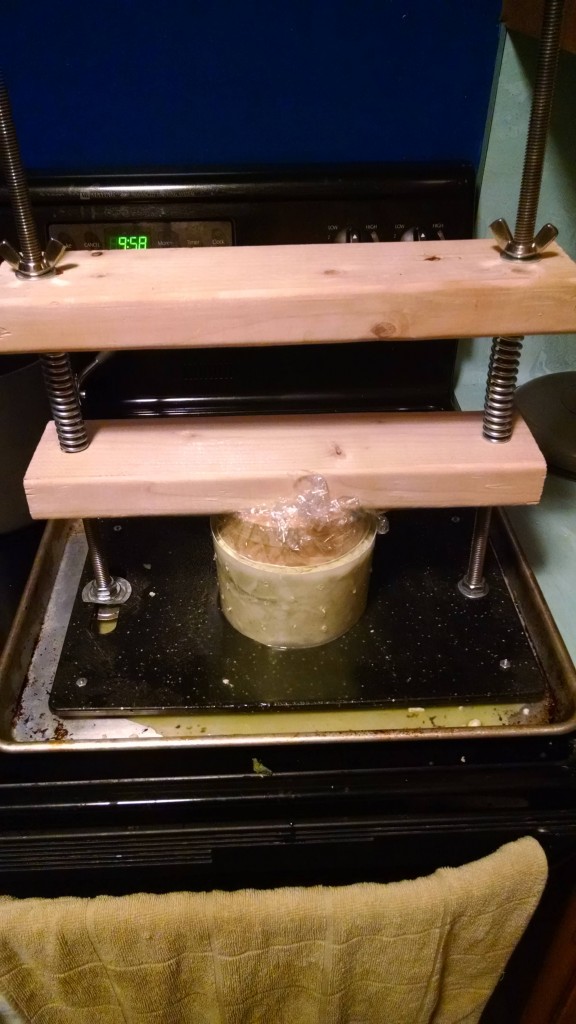
Next came the Sage Derby. This was the first batch that was cheddared. You can see it in the cheese press here.
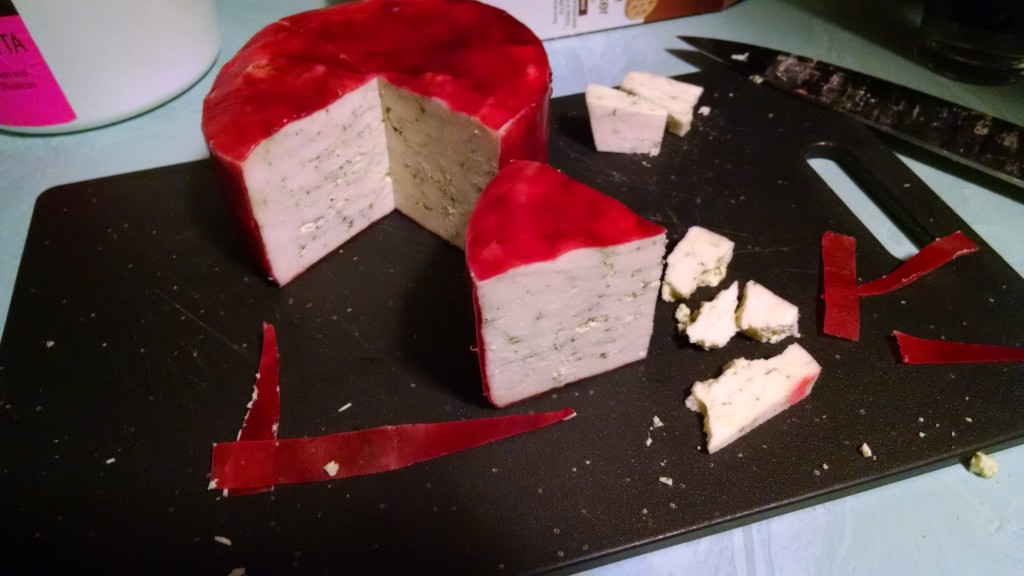
Four weeks later, it turned out pretty good. Very sage-y! It worked best on sandwiches or crackers, because it was very overwhelming by itself. A little dry because I overcooked the curds.
I still need to work on my waxing technique. You can see in the photo that the wax is quite thin. Some whey leaked out of the cheese while it was aging in the fridge.
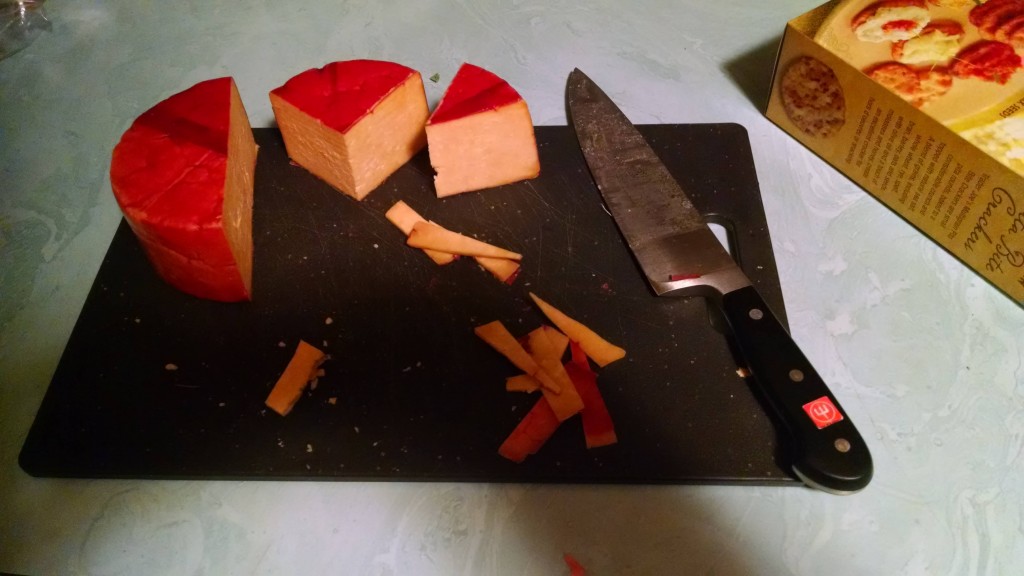
Finally is the Cheshire, opened just a few days ago. This is my favorite so far. It’s dry, salty, crumbly, and creamy. It’s got a good pungent kick to it that my other cheeses haven’t had. I feel it’s the first one that’s had its own flavor instead of mostly tasting like “cheese.” The recipe has the curds sitting at a high temperature overnight before pressing. That lets the bacteria work full-bore on the curds for 8 hours, so that’s probably where the flavor comes from. This is the first cheese that’s so good, I want to make the same recipe again instead of trying something new.
Again, I had wax problems with some mold developing on the surface in the pockets. I washed it in brine and cut off the wax to avoid the mold, but luckily none of it penetrated into the cheese.
I’ve also got two cheeses aging. One is a plain Gouda, which will be opened in mid-March at just over three months of aging, by far my longest aged cheese. The other is two wheels of Camembert, my first aged soft cheese. I’m real nervous about this one. I’m currently on day three, letting the wheels dry out in a quiet, spare room. So far no mold, good or bad, but the surface is still quite wet. I’m eager for it to dry out so I can move it to the aging fridge. The house is pretty cold, though, so I’m not too worried about it ripening too early.
